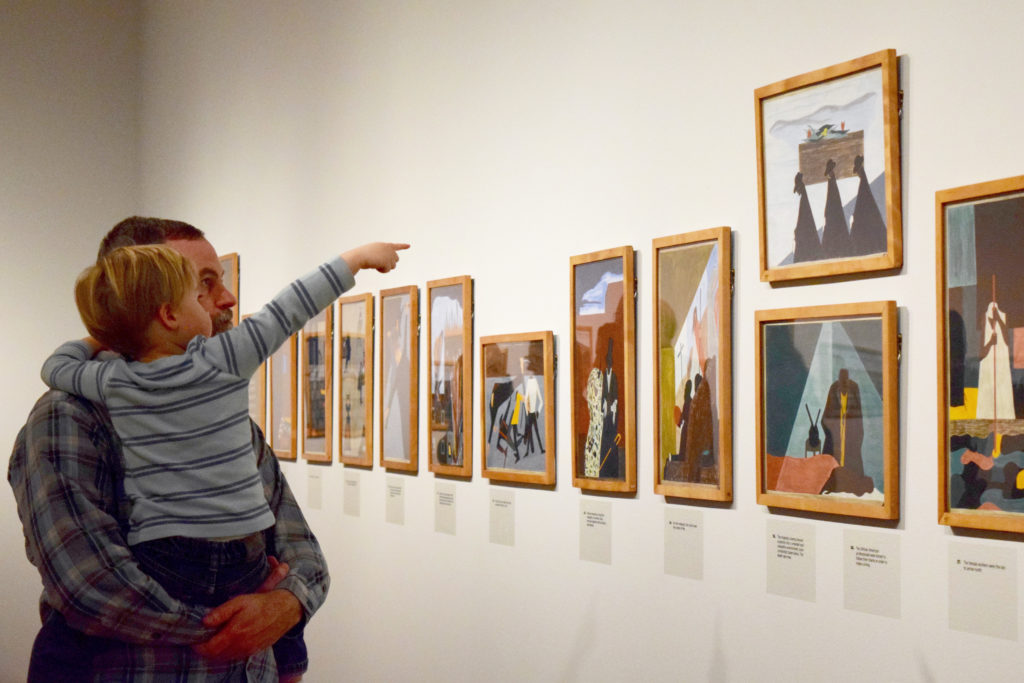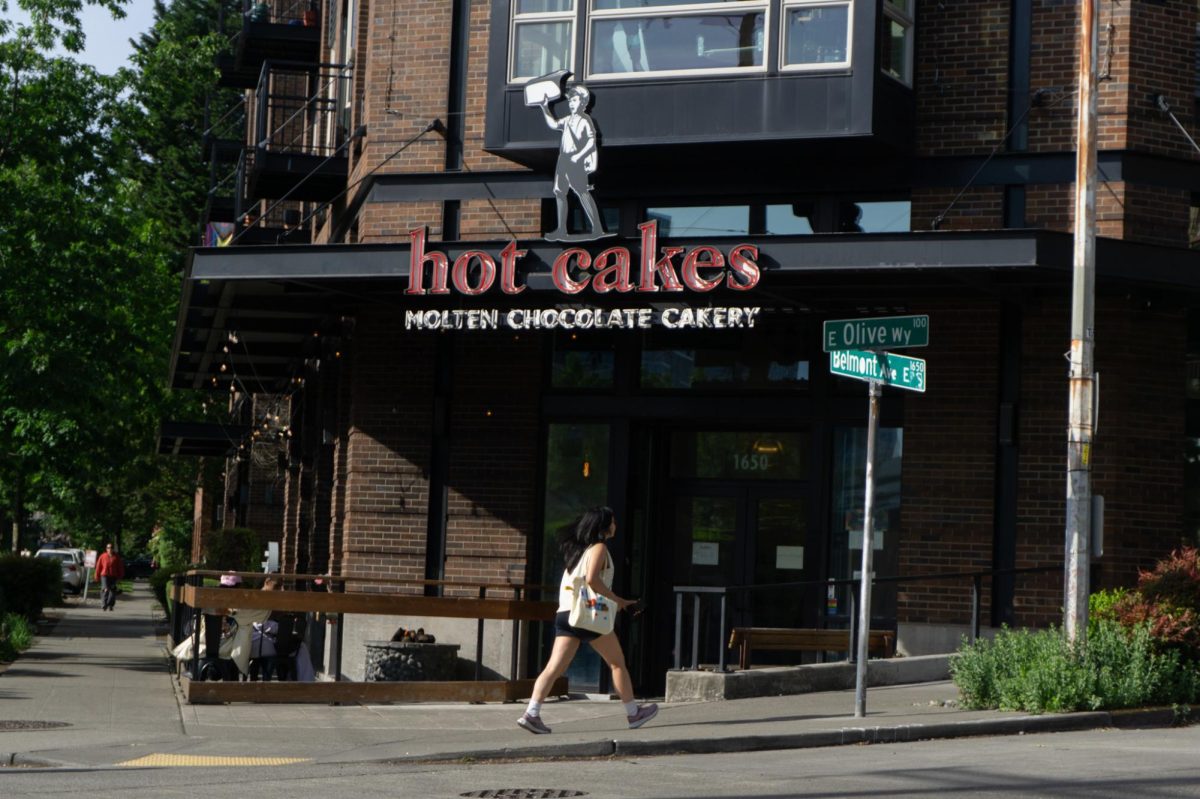Friday evening was a busy night across the nation as many folks buzzed with post-inaugural energy. Ducking out of the hustle and bustle, I sought tranquility at the Seattle Art Museum. It was the opening day of Jacob Lawrence’s “Migration Series,” for which the museum was providing free entry starting on Friday and continuing for the rest of the weekend. “Three-Day Free Day,” as it was coined on the Facebook page, had sold out for the rest of the weekend by Friday night.
Before making its way to the Seattle Art Museum for this special exhibition, the sixty-panel installation had been split in half between the Museum of Modern Art in New York and the Phillips Collection in Washington, D.C. Because Jacob Lawrence moved to Seattle in 1971 to work for the University of Washington, it is particularly fitting for the “Migration Series” to be hosted in his adoptive home city. The series presents itself as a narrative, depicting the story of the African American movement from the agricultural South to the industrial North, each fraught with danger and oppression.
Walking through the small room, framed tempera paintings lined the walls. The crowd formed a line, shuffling silently from the first image to the sixtieth. As the visitors processed the plot, their faces twisted into varying expressions of disdain, ironic laughter and sorrow. You could feel the whole room concentrating. It was as if each person in line was reading the same book, one page ahead of the other.
I talked to visitor Bur Davis about the story-like nature of the exhibition.
“As I was going through, I was thinking, ‘Wow this should be a graphic novel!’ or maybe I should say, ‘This is a great graphic novel!’ It was very informative. The thing that I didn’t know that really surprised me was the measures that the landowners in the South took to try to keep workers there by just imprisoning them or by jailing the labor agents who were coming down from the North. Another thing I was thinking of [was] the inevitable sorrow of this group of people leaving a really awful condition for a better condition and inevitably what they find is also bad. And I was just shaking my head at that thinking, ‘God, what could’ve been done?’”
Another visitor, Tyler Fontenot, commented on the importance of recognizing migration history.
“I’m from Louisiana and we don’t have a lot of history marked for migration stuff. I think it’s a thing that people don’t want to talk about because people left the South and a lot of people that stayed behind might be resentful of it—people involved in labor industry in the South. So it’s interesting to see what somebody else has to say from a different perspective about migration.”
Indeed, this graphic demonstration of migration history seemed to remind people of their own family lineage. Reiko Dabney was one of many men and women visiting who felt personally connected to the art.
“It put the pictures to the stories I’ve heard about my family and made it more real for me in seeing how he told the story of how African Americans migrated. My family migrated from Mississippi to Seattle in 1942 so to see that told in stories…[In the paintings], they went to Chicago and Northern cities, but our family came here. It was really empowering to see that in pictures.” While Dabney said the exhibition was particularly powerful for her personal history, she also confessed a troubling realization.
“Many of the pictures you could paint that same picture right now for people about prison and not having places to live, working and breaking up unions, and all of those things. It’s still happening right now. So, we still have a lot of work to do.”
For some, spending inauguration day at the SAM was a time for quiet reflection. Gazing into the faces on painted canvas, I watched many onlookers lose themselves in the characters crafted by Jacob Lawrence. Guest Christina Miller expressed gratitude for the space.
“It was such a great experience to be able to see and read all of it at once slowly and methodically with a group of people, especially on a day like today. It definitely feels like [the Seattle Art Museum] took a great opportunity to open their doors and sort of promote art, education and looking back on our country’s history.”
The “Three-Day Free Day” event is over, but the complete collection of Jacob Lawrence’s “Migration Series” can still be viewed at the downtown location of the Seattle Art Museum through April 23, 2017.
The editor may be reached at
entertainment@su-spectator.com









